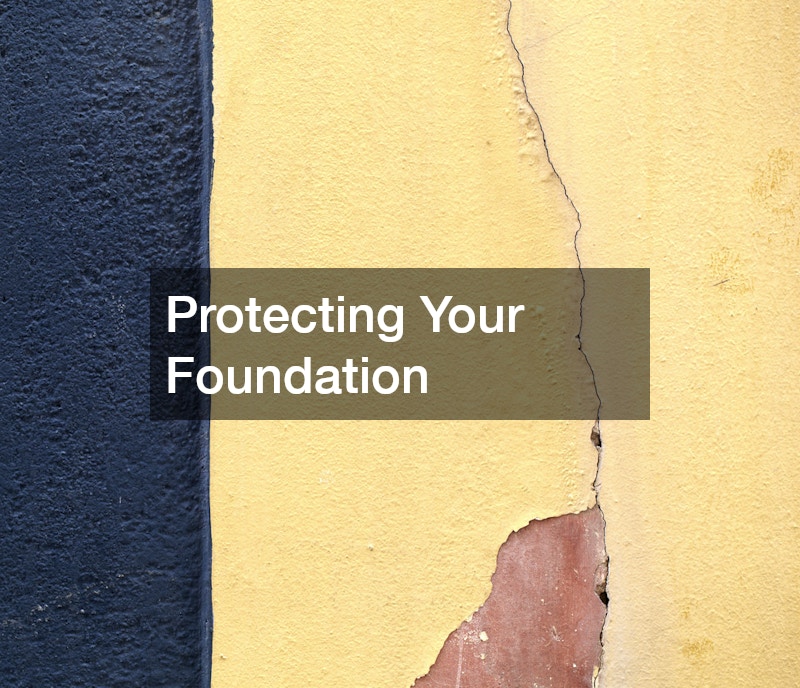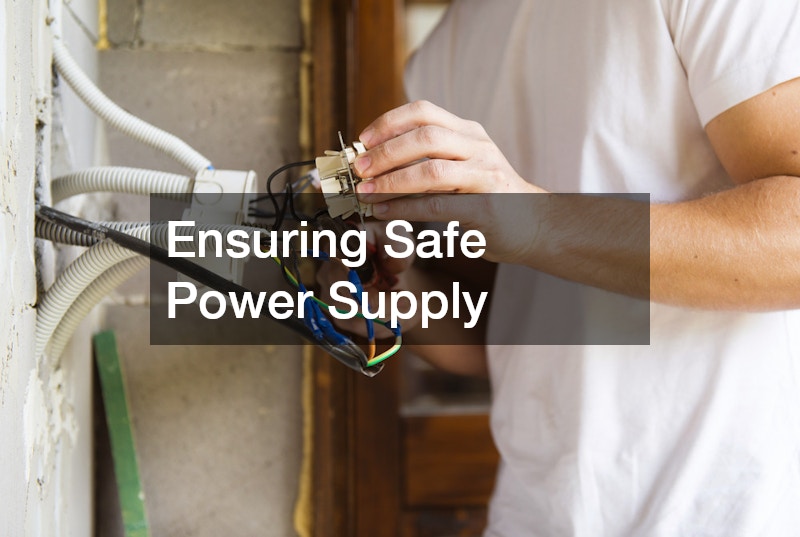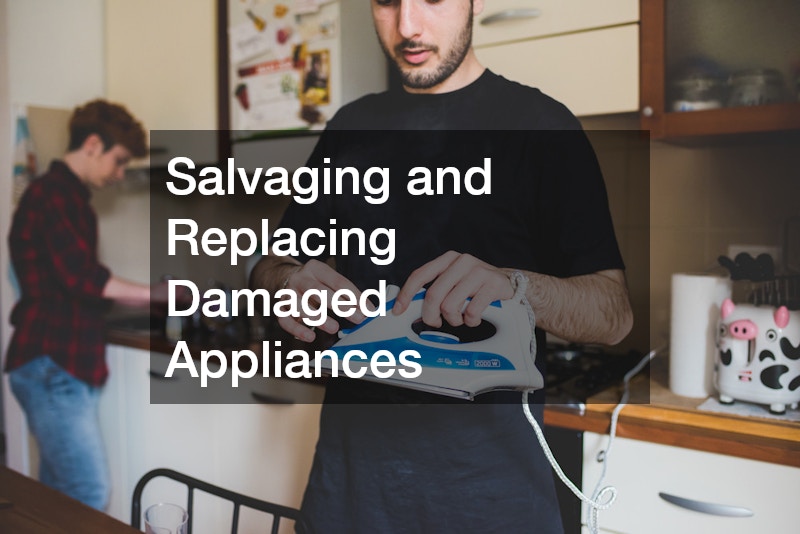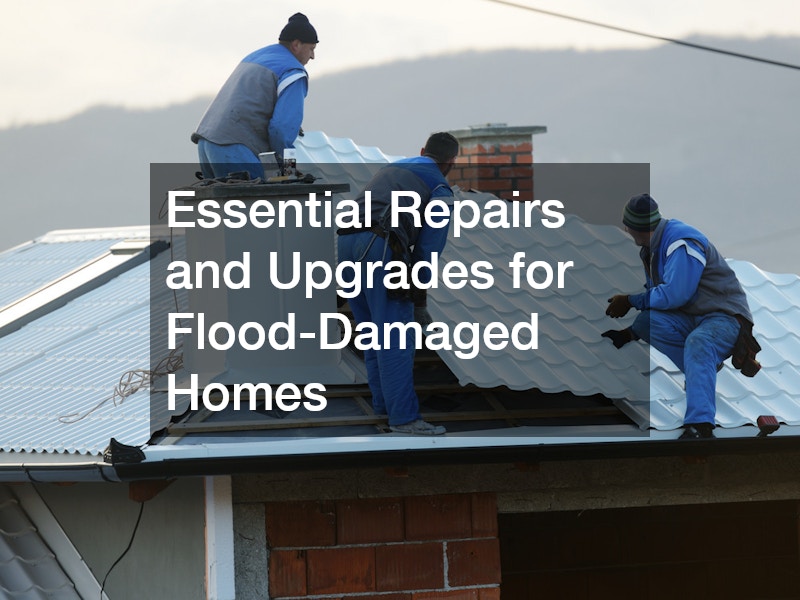Flooding can cause devastating damage to homes, leaving homeowners facing the daunting task of repairing and restoring their properties. Whether from a natural disaster or a plumbing failure, floodwaters can infiltrate nearly every part of a home, leading to structural issues, mold growth, and electrical hazards. The aftermath of flooding can feel overwhelming, but with a clear plan and prompt action, homeowners can make the necessary repairs and upgrades to restore their homes to safety and comfort.
In this article, we will cover the essential home restoration after flooding, outlining the critical repairs and upgrades needed for flood-damaged homes. Each section offers specific, actionable advice and highlights when it is best to seek professional assistance. From roof repair to appliance restoration, let’s break down the critical areas that require attention after a flood.
1. Roof Repair: Addressing Leaks and Structural Damage
After a flood, one of the first and most important areas to inspect is the roof. Floodwaters can cause significant damage to roofing materials, including lifting or even washing away shingles. Additionally, water can seep into the attic, leading to damage of insulation, structural beams, and other components. If left unaddressed, these issues can worsen over time, allowing water to continue infiltrating the home and increasing the likelihood of mold growth. Mold can thrive in damp environments, particularly in the attic, and can quickly spread to other areas of the home, presenting both health risks and further structural damage. Timely roof repair is crucial to prevent these long-term issues.
To prevent further damage, homeowners should take immediate action to assess and protect their roofs. The first step is to carefully inspect the roof for visible signs of damage. Look for missing or damaged shingles, any signs of leaks inside the attic, or sagging sections of the roof. If the damage is extensive, it may be necessary to consult a professional roofer for roof repair. However, if you’re unable to get help right away, covering the roof with a tarp or plastic sheeting can help mitigate the damage. These temporary measures will provide some protection against additional water intrusion until more permanent repairs can be made.
When structural damage is suspected or when the extent of the roof damage is unclear, it’s crucial to call in a licensed roofing contractor. Professional roofers have the specialized tools and expertise to perform a thorough inspection and to complete roof repairs that are necessary to prevent future leaks. A roofer can ensure that the roof is properly sealed and provide solutions that protect the home from further water damage, which is essential for maintaining both the safety and integrity of the structure.
2. Gutter Cleaning: Ensuring Proper Drainage
Gutters play a critical role in directing rainwater and floodwater away from your home, helping to protect the foundation and prevent water damage. After a flood, gutters can easily become clogged with debris such as leaves, branches, mud, and silt carried by the floodwaters. When gutters become obstructed, water may overflow, potentially leading to additional flooding near the foundation or causing structural damage. Over time, this overflow can weaken the foundation, leading to costly repairs. Therefore, it is essential to perform gutter cleaning promptly after a flood to ensure that water can flow away from the home as intended.
The first immediate step homeowners should take is to clear the gutters of any debris. Use a ladder to safely access the gutters and remove any leaves, dirt, or branches that may be blocking the flow of water. It’s important to check the downspouts as well, ensuring they are not clogged and that water can flow freely through them. If the gutters and downspouts are clear, this can significantly reduce the risk of water damage to the foundation. Regular inspection and gutter cleaning after flood events can help prevent future issues from arising.
To further reduce the likelihood of gutter blockages, installing gutter guards is a wise long-term solution. Gutter guards are designed to keep larger debris, like leaves and twigs, out of the gutters while still allowing water to flow freely. This can save time and effort in future cleanings and help prevent clogging during the next rainstorm or flood. However, gutter cleaning can be a hazardous task, especially after a flood when the ground may be unstable or the ladder may not be safe to use. If you’re uncomfortable cleaning gutters yourself or if there is visible damage to the gutters, it’s best to hire a professional gutter cleaner. Professionals have the right tools and experience to clear gutters safely and ensure they are in optimal working condition, which is essential to protecting your home from further water damage.
3. Water Damage Restoration: Mitigating Long-Term Effects
Floodwater can cause significant damage to the interior surfaces of a home, including walls, floors, and ceilings. When water seeps into these materials, it can weaken their structure and lead to long-term issues such as warping, staining, and mold growth. Mold is a particularly serious concern, as it can begin to form within 24 to 48 hours of water exposure and poses significant health risks, including respiratory issues and allergic reactions. If left untreated, water damage can also ruin furniture, flooring, and other belongings, making timely Water Damage Restorations essential for preserving the home’s condition.
The first step in addressing water damage is to remove any standing water from the home. This can be done using a sump pump, wet vacuum, or by hiring a water extraction service. It’s important to act quickly, as standing water accelerates the damage to surfaces and increases the risk of mold growth. Once the water has been removed, the next step is to dry out the affected area. Fans and dehumidifiers can help circulate air and reduce moisture, while opening windows and doors, if possible, can improve ventilation. The quicker the drying process begins, the better the chances of salvaging your belongings and minimizing damage.
For items that cannot be saved, such as soaked carpets, furniture, or clothing, it’s crucial to remove them promptly to avoid further contamination and deterioration. Any items that have been in contact with floodwaters should be discarded, as they may carry harmful bacteria and toxins. When dealing with extensive water damage, it may be necessary to call in professional water damage restoration services. These experts have the knowledge, equipment, and expertise to properly dry out the home, restore it to a habitable condition, and prevent mold and mildew growth. The Institute of Inspection Cleaning and Restoration Certification (IICRC) notes that mold can start developing within just 48 hours of moisture exposure, which is why prompt action is necessary to protect your home and health.
4. Slab Leak Repair: Protecting Your Foundation

Slab leaks occur when water seeps through cracks in the foundation, often caused by increased pressure from floodwaters or shifting ground. These leaks can result in significant damage to the home’s foundation and plumbing system. Because they are often hidden beneath the floor, slab leaks can be difficult to detect until they cause noticeable issues. Left unchecked, slab leaks can weaken the foundation, lead to structural problems, promote mold growth, and result in costly repairs.
There are several signs that may indicate the presence of a slab leak. One of the most common is the appearance of unexplained wet spots on the floor or carpet, particularly in areas that aren’t typically exposed to moisture. A sudden, noticeable increase in water bills is another red flag, as it suggests that water is being lost due to a leak. Additionally, homeowners may notice cracks in the foundation or floor, which can result from the constant pressure caused by water seeping through the slab. These signs should prompt immediate attention to prevent further damage.
If you suspect a slab leak, the first immediate step is to monitor the water supply. Check your water meter for unusual readings and turn off the main water supply to prevent further leakage and water damage. If you notice wet spots or an increase in your water bill, this may indicate that water is actively leaking beneath the slab. It’s also important to inspect the foundation for any visible cracks or uneven flooring, which could signal a slab leak. However, because slab leaks often occur beneath the concrete foundation, these signs may not always be visible.
Due to the complexity of locating and repairing slab leaks, slab leak repair requires professional help. Specialized tools, such as leak detection equipment, are necessary to pinpoint the source of the problem. A licensed plumber should be called in to perform a thorough inspection of the foundation and plumbing system. If the slab has sustained significant damage, foundation repair services may be required to restore the home’s structural integrity. Timely slab leak repair is crucial to prevent further damage and protect both the plumbing and the foundation, ensuring the safety and longevity of the home.
5. Basement Waterproofing: Preventing Future Flooding
Basements are particularly vulnerable to flooding, as they are typically the lowest point of a home and are more likely to accumulate water when floodwaters rise. Even after the waters have receded, the basement can remain at risk for future flooding if not properly addressed. Flooding can cause significant damage to walls, flooring, and belongings, and it often leads to lingering moisture that can result in mold growth, mildew, and musty odors. Homeowners should take immediate steps to assess and waterproof the basement to prevent further damage and safeguard the integrity of the home.
Once the floodwaters have drained, the first immediate step is to inspect the basement for any signs of lingering moisture. Even if the water seems to have receded, moisture can remain in the walls, floors, and air, leading to mold growth or deterioration over time. Using dehumidifiers or ventilation fans can help dry out the space quickly and reduce the risk of mold and mildew. It’s important to monitor the area for several days to ensure it remains dry.
Next, homeowners should inspect the foundation and walls for visible cracks, which could allow water to seep in during future storms. Sealing these cracks with waterproof sealants or epoxy can prevent further water infiltration. It’s also important to assess the overall drainage around the foundation to ensure that water is directed away from the home during heavy rains. For a more comprehensive solution, homeowners can consider installing sump pumps, French drains, or vapor barriers. These systems help manage water around the basement and keep it dry in the future. Sump pumps, for example, remove water that accumulates in a basement sump pit, while French drains redirect water away from the foundation. Vapor barriers prevent moisture from rising through the floors and walls.
Given the complexity of waterproofing and the need for effective drainage systems, hiring a professional is often the best approach. Waterproofing specialists have the knowledge and expertise to assess your basement’s vulnerabilities and recommend a tailored solution to prevent future flooding. They can install the appropriate systems, such as sump pumps and French drains, and ensure that your home is protected from water damage during future storms. Long-term basement waterproofing can provide peace of mind, knowing that your home is safeguarded from the potentially devastating effects of flooding.
6. Licensed Electricians: Ensuring Safe Power Supply

Floodwaters can be particularly dangerous when it comes to electrical systems, as water and electricity are a dangerous combination. If floodwater comes into contact with electrical wiring, outlets, or panels, it can create serious risks of electrical shock, fires, or further damage to the home’s electrical infrastructure. Even after the water has receded, it’s crucial to take immediate action to ensure that the electrical system is safe to use again.
The first immediate step when dealing with potential electrical damage from flooding is to turn off the power to the home. If you suspect that floodwaters have affected the electrical system, immediately switch off the main power supply to prevent any further risk of electrocution or fire. It’s essential to avoid using any electrical outlets or appliances that have been exposed to water, as they may be short-circuited or cause electrical shocks. Never attempt to touch electrical equipment or outlets with wet hands, as this can be extremely hazardous.
Once the power is off, carefully inspect the electrical panels, wiring, and outlets for signs of water exposure, corrosion, or visible damage. Look for rust, discoloration, or any signs of water intrusion, as these can indicate that the electrical system has been compromised. It’s important to note that floodwaters may have reached areas of the electrical system that are hidden behind walls or beneath floors, so a thorough inspection is essential.
However, assessing and repairing flood-damaged electrical systems requires expertise. It is crucial to call a licensed electrician to inspect and repair any electrical damage. They have the knowledge and tools to safely assess the condition of the system, replace damaged wiring, outlets, or electrical panels, and ensure the system is fully functional and safe to use again. Licensed electricians can also verify that the electrical system complies with safety codes, minimizing potential risks of future electrical hazards. Proper electrical repairs after a flood are critical to ensuring the safety of your home and its occupants.
7. Plumbing: Restoring Functionality to Your Home
Floodwaters can cause significant damage to plumbing systems, especially when pipes, drains, and fixtures are submerged or exposed to water. The pressure from rising floodwaters can crack pipes, loosen joints, and introduce contaminants into the system, leading to leaks or potential blockages. After a flood, it’s essential to take immediate steps to check the plumbing for any signs of damage and prevent further issues that could disrupt the water supply or cause costly repairs.
The first immediate action is to inspect the exposed pipes for any visible leaks, cracks, or signs of corrosion. Floodwaters can weaken pipes over time, so look for discoloration, rust, or any areas where water may be leaking. Also, check sinks, toilets, and other plumbing fixtures for signs of water damage. If the floodwaters have reached these fixtures, they could have become loose or damaged, which may cause leaks or functional issues. Pay special attention to areas where pipes enter the walls or floor, as these places are especially vulnerable to water infiltration.
Next, test the water supply by turning on the faucets and checking the water pressure and flow. If you notice that the water pressure is low or there’s a lack of flow, this could be a sign that floodwaters have impacted the plumbing system, potentially clogging pipes or damaging the water lines. Additionally, if you notice strange odors or discoloration in the water, it may indicate contamination or debris in the plumbing that needs to be addressed.
Given the potential complexity of plumbing repairs after a flood, professional help is essential. A licensed plumber should assess the damage to your plumbing system, identify any leaks, replace damaged pipes, and ensure that everything is functioning correctly. Plumbers have the tools and expertise to detect hidden damage that may not be visible at first glance. They can also help with cleaning the system, removing any contaminants, and ensuring that your home’s plumbing is in good working order before it’s used again. Addressing plumbing issues quickly can help prevent further damage, health risks, and expensive repairs down the line.
8. Backup Generator: Preparing for Future Storms
Floods often coincide with severe storms, which can lead to power outages, leaving homeowners without electricity for extended periods. During a flood, the loss of power can be especially troublesome, as it disrupts essential systems like HVAC (heating, ventilation, and air conditioning), sump pumps, refrigerators, and lights. Without power, floodwaters may also have a harder time draining away from the home, further exacerbating the damage. This makes having a backup power source, such as a generator, crucial for maintaining safety and functionality during emergencies.
Immediately after a flood, if the power goes out, the first priority is to ensure you have alternative sources of power for basic needs. Flashlights, battery-powered lights, and portable chargers are essential for providing illumination and staying informed during the storm. If you have medical devices or other critical equipment that rely on electricity, battery-powered options or portable generators should be used until power is restored. It’s important to keep a stock of extra batteries and a portable charger for phones to stay connected in case of emergencies.
For future storms, it’s highly advisable to consider installing a backup generator. A properly installed generator can provide much-needed power to essential systems like sump pumps, refrigeration, lights, and HVAC units, helping you stay safe and comfortable during and after a flood. Backup generators can either be portable, which are manually set up, or stationary, which automatically kick in when the power goes out. A stationary generator offers more convenience and reliability, ensuring that key appliances continue to function without interruption.
However, installing a backup generator should always be done by a licensed electrician. Professional installation is critical to ensure that the generator is safely connected to your home’s electrical system, preventing hazards such as electrocution or fire. An electrician will also provide proper instructions on how to maintain and test the generator regularly to ensure it functions when needed. With professional installation and regular maintenance, a backup generator can provide peace of mind and protect your home during future floods and storms.
9. HVAC Service: Restoring Climate Control
Floodwaters can cause significant damage to HVAC systems, potentially affecting their ability to heat or cool your home effectively. If water reaches the HVAC unit, it can damage key components, such as the electrical wiring, coils, and motors, and create an environment that fosters mold and bacteria growth. Additionally, floodwater may infiltrate the ducts or vents, leading to further contamination and health risks. To prevent long-term damage and health hazards, it’s essential to have your HVAC system inspected and repaired promptly after a flood with professional HVAC service.
The first immediate action to take is to turn off the HVAC system if floodwaters have reached the unit. Continuing to operate the system could cause further damage to electrical components and spread contaminants throughout the home via the ventilation system. Turning off the unit will help prevent water from circulating through the system and minimize the risk of electrical malfunctions or fire hazards.
After turning off the system, inspect the HVAC unit for any visible signs of moisture damage. Look for water damage around the vents, coils, and ducts, and check for wet insulation or pooling water. If you notice any signs of water exposure, it’s critical to avoid turning the system on, as this could worsen the damage and spread contaminants further into the home.
Because flood damage to HVAC systems can be extensive, HVAC service is necessary to restore the unit to safe and efficient operation. A licensed HVAC technician should be called to inspect, clean, repair, and disinfect the system. They can assess the damage to the coils, vents, and electrical components, and check for mold or bacterial growth within the system. A professional technician will also perform the necessary cleaning and disinfection to remove any contaminants, ensuring that the system is safe for use. By scheduling proper HVAC service after a flood, you can help ensure your system functions efficiently and remains free from health hazards.
10. Appliance Repair: Salvaging and Replacing Damaged Appliances

Floodwaters can cause significant damage to household appliances like refrigerators, washing machines, and dryers. These essential appliances can be particularly vulnerable because floodwater can seep into their electrical components, wiring, and motors, causing short circuits, corrosion, or mechanical failures. After a flood, it’s important to carefully assess the condition of these appliances to determine whether they can be repaired or need to be replaced. Using a damaged appliance can pose serious safety risks, so taking the right steps quickly is crucial.
The first immediate action is to disconnect all appliances from their power supply if they have been exposed to floodwaters. This helps prevent any electrical hazards, such as electrical shock or fire, that may occur if the appliance is turned on while still wet or damaged. If the appliances are gas-powered, it’s important to also shut off the gas supply to prevent leaks or potential explosions. For refrigerators and other appliances with food in them, take steps to salvage perishable items as quickly as possible.
Once the power and gas supplies have been safely disconnected, inspect the appliances for visible signs of water damage. If the appliances appear to be salvageable, thoroughly clean and dry them before using them again. Remove any standing water inside and around the appliance, and allow them to dry out completely. It’s crucial to check for any lingering moisture in areas such as vents, motor compartments, or inside the drum of a washing machine or dryer, as any remaining water can lead to mold growth, rust, or further damage.
However, assessing whether an appliance can be safely repaired after flood damage requires professional expertise. It’s best to call an appliance repair technician who can evaluate the condition of the unit and determine if it can be safely restored. A technician will inspect the electrical, mechanical, and safety components of the appliance to ensure it is safe to use. In cases where the damage is beyond repair, they will help determine if the appliance needs to be replaced and may advise on safer, more reliable models for future use. By seeking professional help, you can avoid safety risks and ensure that any appliance repairs are done correctly.
Recovering from a flood requires prompt action and thorough repairs to prevent long-term damage and health risks. By addressing critical areas like roof repair, plumbing, electrical systems, and water damage restoration, homeowners can restore their homes to a safe and comfortable state. For many of these repairs, professional help is necessary to ensure the safety and functionality of the home. Investing in these essential repairs now can save you from more costly damages down the road, and protect your home from future flood risks.


